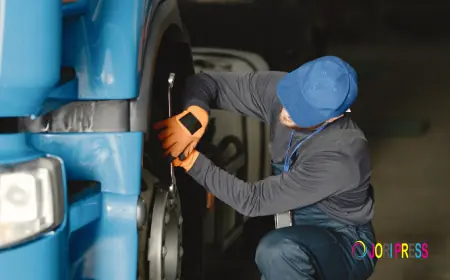How Do Vets Diagnose and Treat Arthritis in Aging Dogs?

Watching a once-active dog slow down, limp, or struggle to get up can be heartbreaking. Arthritis is a common condition in older pets, but that doesn’t mean your dog has to live in pain. With the right care, many dogs regain comfort, mobility, and quality of life. If you’re exploring options for dog arthritis treatment in Topeka, KS, it helps to understand how veterinarians identify and manage this condition.
Let’s break down the process, from diagnosis to long-term care.
Recognizing the Signs of Arthritis in Dogs
Arthritis, or osteoarthritis, is a degenerative joint disease that often develops with age. It happens when the protective cartilage between bones wears down, leading to stiffness, pain, and reduced mobility.
Common signs include:
l Limping or favoring one leg
l Difficulty standing or climbing stairs
l Decreased activity or reluctance to play
l Joint swelling or stiffness, especially after resting
l Whining, irritability, or other behavior changes
These symptoms can be subtle at first, so regular checkups are key, especially as your dog gets older. Many pet parents confuse early signs of arthritis with “normal aging,” but vets trained in senior pet care in Topeka, KS, can spot the difference.
How Vets Diagnose Arthritis in Dogs?
Diagnosis begins with a detailed history and physical exam. Your vet will ask questions about changes in your dog’s behavior, activity levels, and any signs of pain. During the exam, they’ll gently test your dog’s joints for stiffness, swelling, or discomfort.
Next, diagnostic tools help confirm what’s going on:
l X-rays: These show changes in the joints, such as bone spurs or joint space narrowing.
l Joint fluid analysis: This can rule out infections or immune-related joint conditions.
l Blood tests: Sometimes used to rule out other causes of lameness.
Some advanced clinics may also offer imaging, like CT or MRI scans, for more detailed views. Early detection is vital; the sooner arthritis is identified, the easier it is to manage.
Treatment Options Vets Use
There’s no cure for arthritis, but plenty of treatments can ease pain, improve mobility, and slow progression. Vets usually recommend a combination approach based on your dog’s age, size, and severity of symptoms.
Medications
Non-steroidal anti-inflammatory drugs (NSAIDs) are commonly prescribed to reduce pain and inflammation. Your vet may also suggest joint supplements like glucosamine, chondroitin, or omega-3 fatty acids.
Weight Management
Extra weight puts stress on joints. A healthy diet and regular exercise are essential parts of senior pet care in Topeka, KS, especially for arthritic dogs.
Physical Therapy and Laser Treatments
Rehabilitation services, including hydrotherapy or laser therapy, can help improve flexibility and reduce pain.
Environmental Modifications
Orthopedic dog beds, ramps, and non-slip flooring can make a huge difference in day-to-day comfort.
Surgery (in severe cases)
If medications and lifestyle changes aren’t enough, surgical options like joint replacement or corrective procedures may be considered.
Finding the right combination of treatments is often a gradual process, but with consistent care, many dogs improve significantly.
Supporting Your Dog at Home
Living with an arthritic dog means making small changes that support their comfort. Keep walk times gentle but regular. Use raised bowls to reduce joint strain. Most importantly, stay alert to any new signs of pain or changes in behavior and share them with your vet.
Local providers who specialize in dog arthritis treatment in Topeka, KS, can help you build a plan that fits your dog's unique needs, and adjust it over time as those needs change.
Final Thoughts
Arthritis doesn’t have to steal your dog’s joy. With early diagnosis, expert care, and some thoughtful adjustments, your senior dog can still enjoy an active, happy life. Vets experienced in senior pet care in Topeka, KS, offer compassionate solutions that help your furry friend feel better and move easier.
So if your dog is slowing down or showing signs of discomfort, don’t chalk it up to old age just yet; the right support can make all the difference.
What's Your Reaction?
 Like
0
Like
0
 Dislike
0
Dislike
0
 Love
0
Love
0
 Funny
0
Funny
0
 Angry
0
Angry
0
 Sad
0
Sad
0
 Wow
0
Wow
0

















































